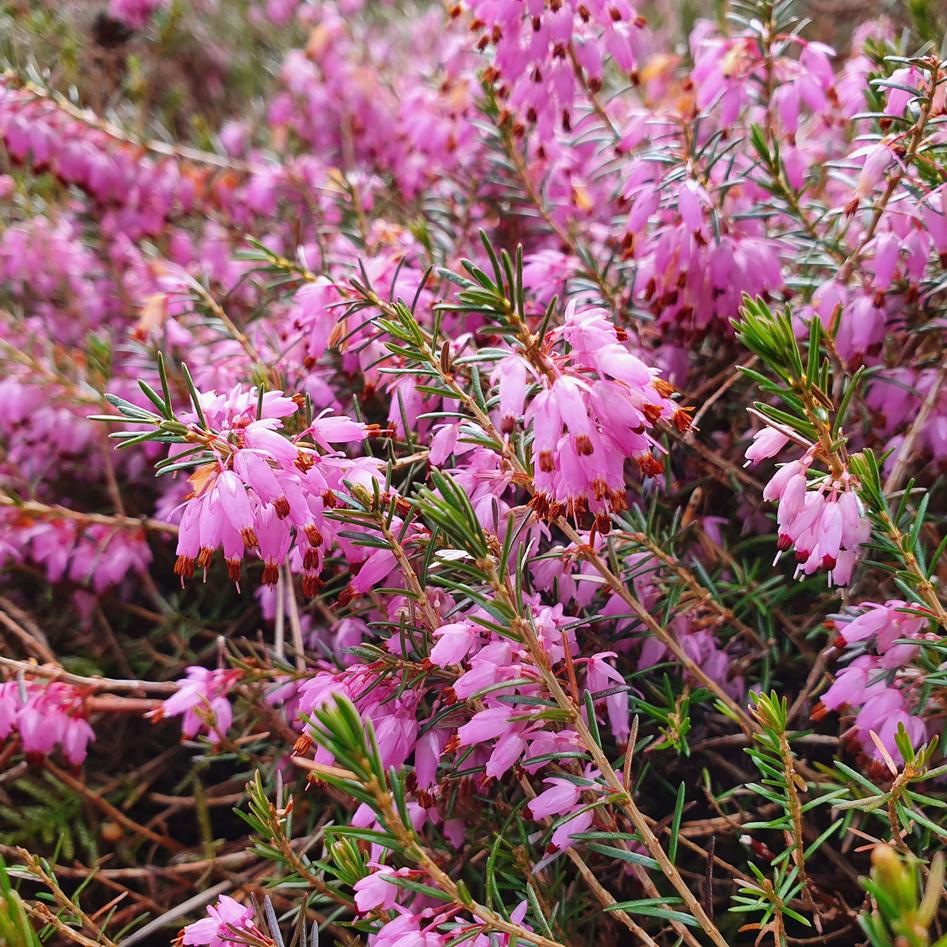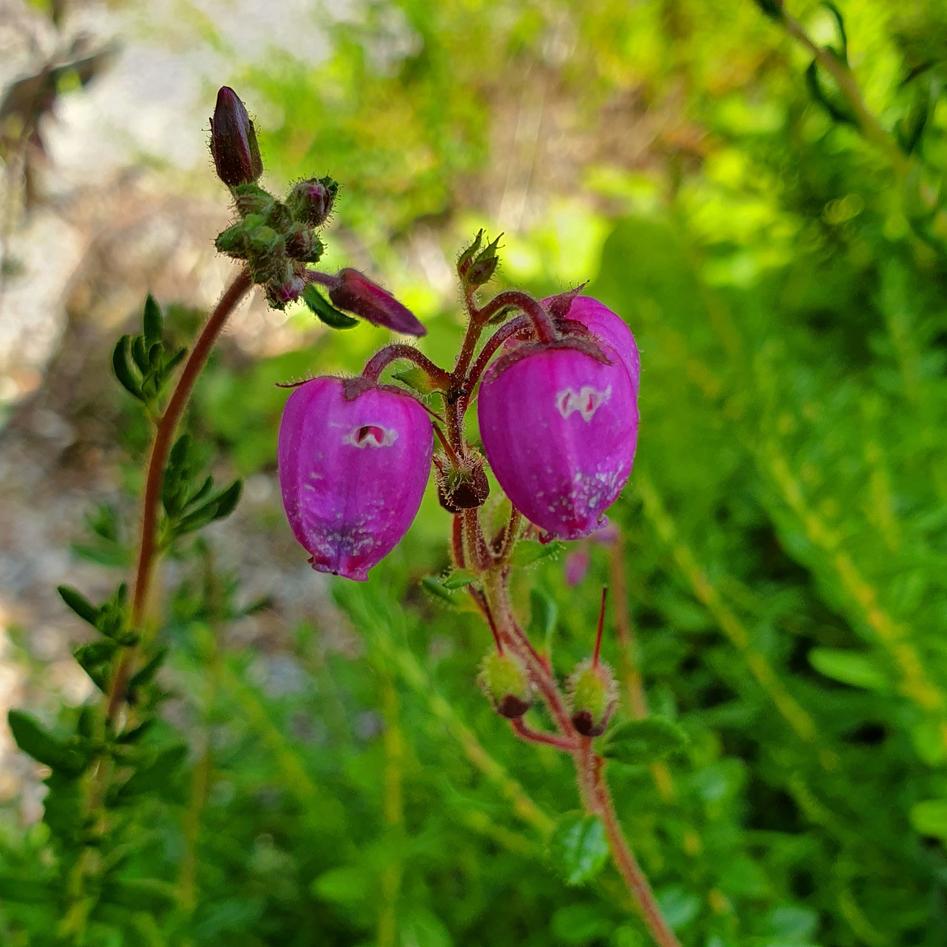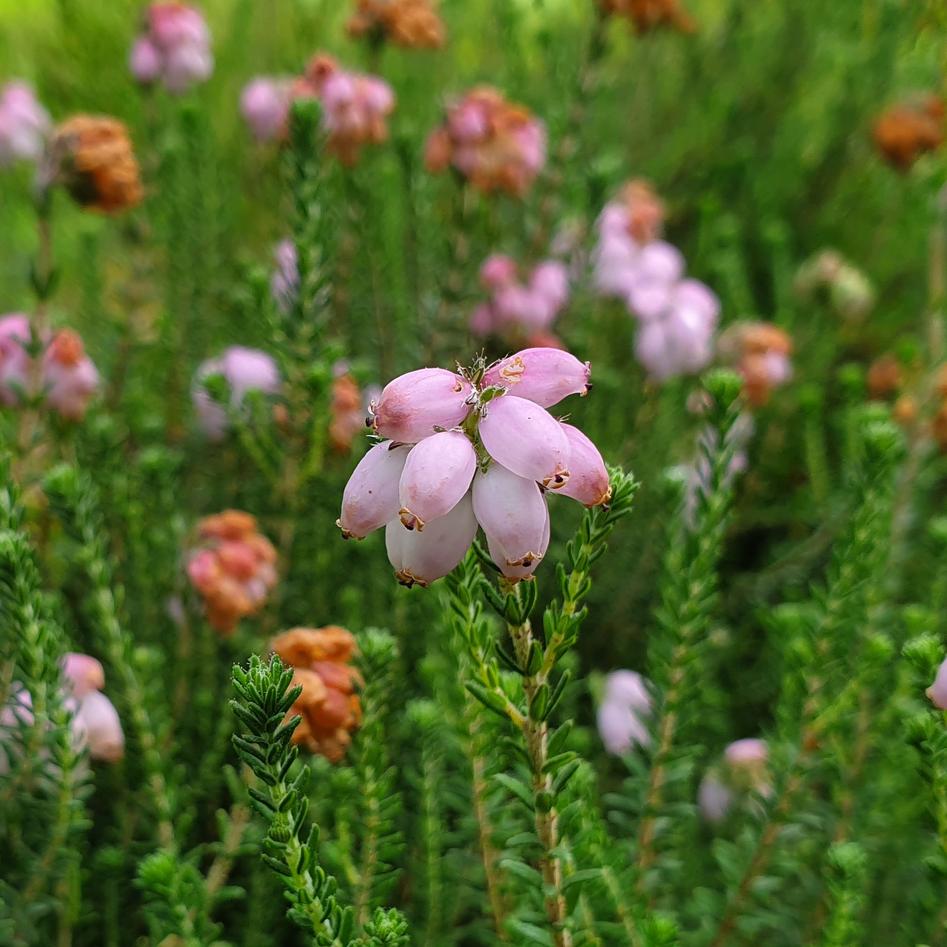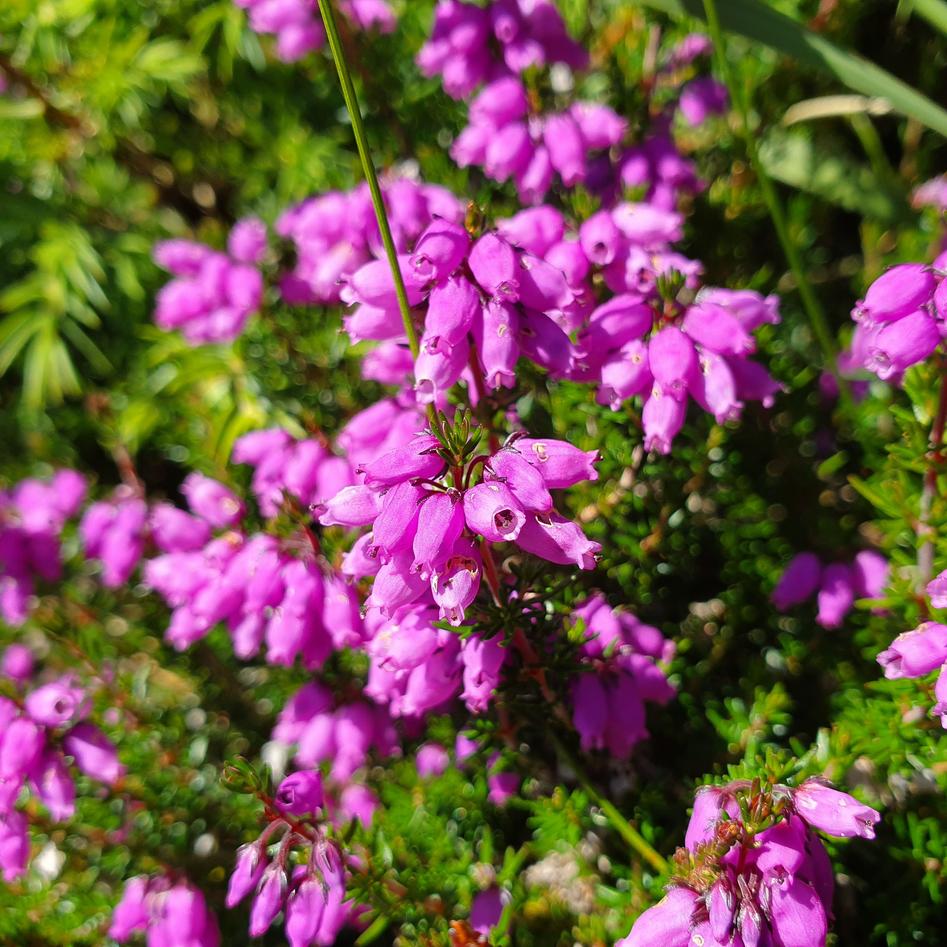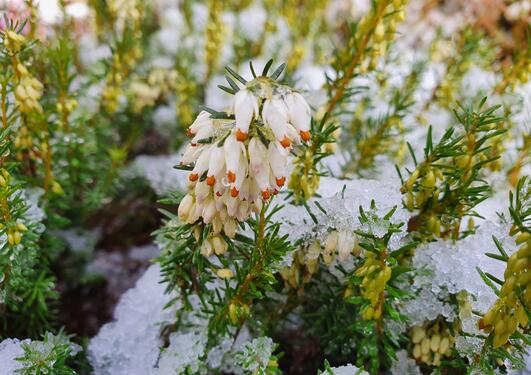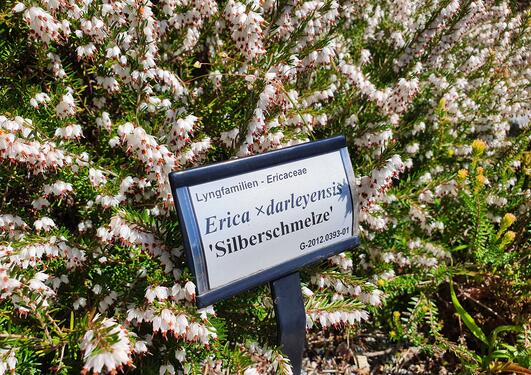Themed displays
2. "Flowering heathers"
Winter-flowering and St. Daboec's heath; cross-leaved and bell heather
Main content
The theme "Flowering heathers" is placed between the road to the administrative buildings and the main road up into the heather garden. Here we intended to show heathers that flower profusely, especially the many species and cultivars of the genus Erica.
The theme is spread over four named areas as shown on the map.
- The winter-flowering heath, Erica carnea, is the hardiest, and therefore placed in the coldest area next to the staff car park. It originates from the alpine area of central and south-eastern Europe where it flowers immediately after the snow is gone. In our mild coastal climate, they tend to flower particularly early, already in January for some varieties. Watch a short video about Erica carnea in the heather garden.
- ‘Summer-flowering heathers’ occupy the upper area, including Daboëcia and a number of different Erica species, and their cultivars, including horticultural hybrids. Another short video focusses on those hybrids. These flower in turn throughout most of the summer but with a hard-to fill gap in flowering from May till Early July. In total 69 Daboëcias accessions have been planted out, and 19 are still alive. Most of the cultivars have been short lived, but one plant from Spanish wild collected seed is still alive and its occasional self-sown seedlings may also prove hardier.
- ‘Cross-leaved heather and friends’ includes varieties of Erica tetralix and its hybrids, of which 55 accessions have been tested and 13 are still alive; 4 of those were wild collected locally.
- The bell heather, Erica cinerea, is not fond of cold winters and only naturally occurs along the coast of Western Norway. A low proportion have proven hardy enough to survive, and only in the most sheltered locations in our gardens. Of 94 accessions tested, only 9 are still alive, of which one is a local seedling, three were wild collected, and the rest horticultural.
Back to the heather garden.
Related content
05.06.2020
